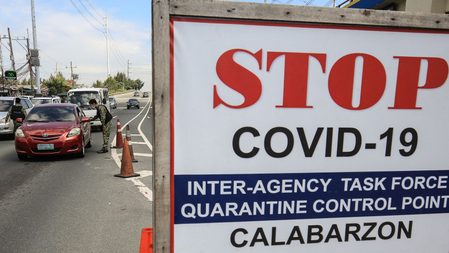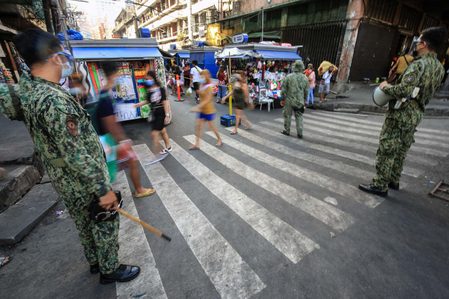SUMMARY
This is AI generated summarization, which may have errors. For context, always refer to the full article.
![[ANALYSIS] The long-term economic impact of the 2nd surge in NCR](https://www.rappler.com/tachyon/2021/03/tl-ncr-second-surge.jpg)
In recent days, there has been much conversation about the economic considerations of the second surge of COVID-19 in the NCR. There has been much debate about whether we should re-enter into lockdown, even for a two-week period, to starve the virus and halt its spread in our capital.
The economic managers of our country point out that a lockdown would have a tremendous negative impact on our economy, which is only just recovering from the extensive quarantines last year. And tragically, the poorest Filipinos would be most affected, with significant numbers experiencing extreme poverty and hunger. Even without a lockdown, it is a moral obligation for our government to provide ayuda to our poorest kababayans!
However, it is also important to ask our economic managers if they have considered the long-term economic impact of allowing the second surge to continue unabated in the NCR. Let me explain.
Malacañang has announced that they expect our current GCQ restrictions to reduce the number of new cases of COVID-19 by 25% in the next two weeks. In my view, this expectation is unreasonable and is not supported by the historical evidence of the first surge last August.
When President Duterte re-imposed an MECQ in the NCR on August 4, 2020, there were 1,785 new cases of COVID-19 recorded on that date by the DOH in Metro Manila. Two weeks later, on August 18, 2020, there were 1,574 new cases. In other words, the MECQ in the NCR was able to reduce the case numbers by only 12% in two weeks. Given this experience in Metro Manila last year, it is not clear to me how a GCQ, which allows for more mobility than an MECQ, will drop the case loads by twice that much in the same period of time!
It is therefore likely that this second surge will be prolonged for many weeks, if not months, and significant numbers of Filipinos will become infected with COVID-19. Putting aside the crushing burden that this will impose on our healthcare system and on our medical frontliners, in my view, this second surge will alter the dynamics of the pandemic in ways that will lead to significant economic costs that have not been included in the calculations of our country’s economic managers.
How will this surge change the dynamics of this pandemic? This second surge is different from the first surge in the NCR because of the influence of the B117 (UK) and B1351 (South African) variants, which the DOH now reports is found in every LGU of Metro Manila. Malacañang has acknowledged that these variants are driving the surge. Indeed, the reason why this surge is explosive is that we are witnessing a biological replacement of one virus strain with two others. In a short time, B117 and B1351 will become the dominant strains of SARS-CoV-2 in Manila, and likely, in the Philippines.
This viral replacement will radically change the contours of the pandemic because the B117 and B1351 variants are more transmissible than the ancestral variant, and the B1351 variant lowers the efficacy of the vaccines we are currently deploying in our country. Last week, a report published in the New England Journal of Medicine revealed that the efficacy of the AstraZeneca vaccine is ineffective against the B1351 variant when it comes to mild or moderate disease. The Pfizer, Moderna, Johnson & Johnson, and Novavax vaccines are also less efficacious against this South African variant.
This increase in transmissibility and decrease in vaccine efficacy across the board is significant, because herd immunity is dependent upon two numbers: the inherent transmissibility of the virus, called R0, and the efficacy of the vaccine, called ε, where the level of herd immunity is [1-1/R0]/ ε. The variants have higher R0 values than the previous strain, and B1351 lowers the efficacy ε of all our vaccines.
Mathematically, this means that we would have to vaccinate more Filipinos to achieve herd immunity. Right now, the national government is seeking to vaccinate 70% of Filipinos to achieve herd immunity. If the vaccine efficacy drops even 15% – which we see when many of the vaccines are tested against the B1351 variant – then we would have to vaccinate 83% of Filipinos for the same level of herd immunity. This is an increase of 13% of the Filipino population, which is around 13 million extra Filipinos or the equivalent of the entire population of the NCR!
Moreover, if the B1351 variant is allowed to become dominant, we would have to plan on vaccinating our entire population with a third booster shot specifically developed to protect individuals from this South African variant. These are already being developed by companies around the world.
Remember that we struggled to get the initial doses of vaccines. Once again, however, Secretary Galvez will have to go back to many of these pharmaceutical companies to buy millions more of this third, special dose against the variants.
We are struggling to vaccinate our people with two doses of the vaccines. If B1351 is allowed to become the dominant strain in our archipelago, as is likely if the second surge is allowed to fester, we will have to vaccinate most of our already vaccinated 83 million Filipinos with a third shot!
In sum, allowing the variant-driven second surge in the NCR to linger will give the B117 and B1351 variants a chance to become the dominant strains in our country. This biological transformation of the pandemic will increase the numbers we will need to vaccinate our people to achieve herd immunity, and will increase the number of doses we would have to administer to all of them. Inevitably, this will extend the pandemic in the Philippines by many months into the 2022 election year.
What is the economic impact of these extra months of pandemic? What is the economic impact of buying millions more doses of vaccines specially designed to counter the B1351 variant? What is the economic impact of needing to vaccinate millions more Filipinos to achieve herd immunity? These are questions that must be included in the economic calculation that our national government is using to determine whether or not it is economically beneficial, or feasible, to lock down our capital for several weeks to cancel the second surge. – Rappler.com
Reverend Fr. Nicanor Austriaco, OP is a Visiting Professor of Biological Sciences at the University of Santo Tomas, and an OCTA Research Fellow.
Add a comment
How does this make you feel?


![[OPINION] Implementing a science-based granular lockdown for NCR](https://www.rappler.com/tachyon/2021/03/tl-granular-lockdown-2.jpg?fit=449%2C449)


![[Time Trowel] Evolution and the sneakiness of COVID](https://www.rappler.com/tachyon/2024/02/tl-evolution-covid.jpg?resize=257%2C257&crop=455px%2C0px%2C1080px%2C1080px)


There are no comments yet. Add your comment to start the conversation.